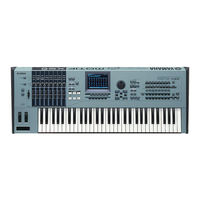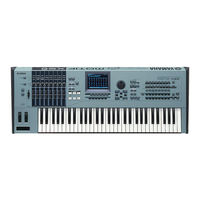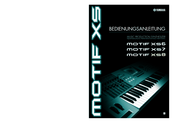Yamaha MOTIF XS6 Manuals
Manuals and User Guides for Yamaha MOTIF XS6. We have 7 Yamaha MOTIF XS6 manuals available for free PDF download: Bedienungsanleitung, Owner's Manual, Service Manual, Data List, Software Manual, Installation Manual
Yamaha MOTIF XS6 Owner's Manual (320 pages)
Music Production Synthesizer
Brand: Yamaha
|
Category: Synthesizer
|
Size: 12 MB
Table of Contents
Advertisement
Yamaha MOTIF XS6 Service Manual (254 pages)
Music production synthesizer
Brand: Yamaha
|
Category: Synthesizer
|
Size: 39 MB
Table of Contents
Yamaha MOTIF XS6 Data List (76 pages)
MUSIC PRODUCTION SYNTHESIZER
Brand: Yamaha
|
Category: Synthesizer
|
Size: 0 MB
Table of Contents
Advertisement
Yamaha MOTIF XS6 Software Manual (7 pages)
MOTIF XS series Extensions for Steinberg DAW
Brand: Yamaha
|
Category: Electronic Keyboard
|
Size: 0 MB
Table of Contents
Yamaha MOTIF XS6 Software Manual (7 pages)
Extensions for Steinberg DAW
Brand: Yamaha
|
Category: Electronic Keyboard
|
Size: 0 MB
Table of Contents
(German) Yamaha MOTIF XS6 Bedienungsanleitung (320 pages)
MUSIC PRODUCTION SYNTHESIZER
Brand: Yamaha
|
Category: Synthesizer
|
Size: 15 MB






